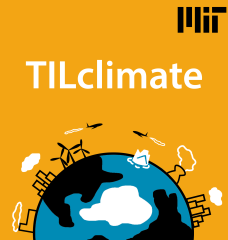
A theme that's emerged in both our podcast interviews is the one step forward, two steps back character of climate action by the US federal government. Nixon set up the EPA in 1970 (imagine a republican creating an environmental agency!) and the OPEC oil crisis hit in 1973, both of which must have created widespread concern about overdependence on oil, especially middle east oil. There was a flurry of investment in renewables - both basic research and commercial incentives - during the Carter administration which diminished when Reagan came to power. Seems familiar doesn't it?
Of course, there's no doubt that much has been achieved since then - the rivers are cleaner, the air is much less polluted, LA doesn't have the smog that it had then and so on. But I also wonder how much of that is tied to economic trends that outsourced environmental degradation to other countries, especially China?
Take a look at the figure - in 1970, when the EPA was established, US per capita emissions were 21.11 metric tons per capita. China's was more than twenty times less - only .94 metric tons per capita. In 2013, the US was 16.39 metric tons, while China's was 7.55, a little less than a half of the US.
A lot of that shift from a factor of twenty to a factor of 2 has got to be (I say "got to be" because I haven't done the research) due to China becoming the manufacturing hub of the world, a position that was the US's in 1970. As we all know, jobs follow the factories, which meant more Chinese workers and fewer manufacturing jobs in the US. And now the US has a president who wants to end that job loss and end climate regulations. So here are my questions:
- How much of a role did stricter environmental regulation play in companies relocating?
- How much of Trump's anti-climate rhetoric is really a coded signal to his supporters that this is how he plans to get manufacturing back?






